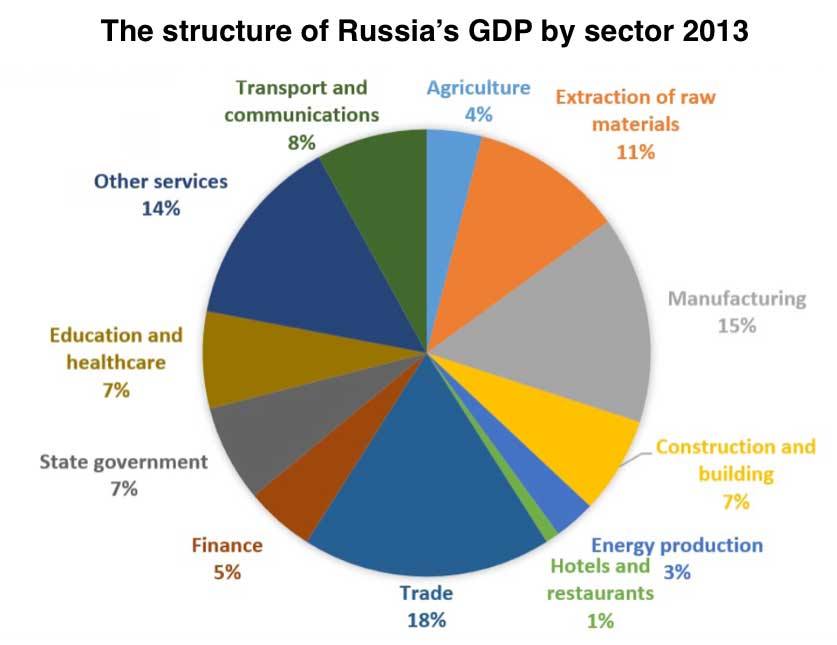A passage from the origin of your chart:
https://fromtone.com/the-political-economy-of-russia-in-a-low-oil-price-world/
[Therefore, hydrocarbons are an indirect but very important source of Russia’s growth. As a proportion of Russia’s GDP, their share is relatively low, yet by contributing about 50 percent to the state budget, they serve as a critical source of funding for the secondary economy and the non-resource sectors, recycled through the system of public finances with all the corruption, patronage and clientelism opportunities that such a system allows. Since 2000, an important trend across this secondary economy has been the growing scope of state ownership, and the growth of the public sector and state bureaucracy. Recent estimates suggest that the share of state ownership in the economy has grown from 38 percent in 2006 to 50 percent of Russia’s GDP in 2012, compared to the world average of 30 percent. The crisis of 2008-09 is believed to have escalated the trend. The share of state-controlled companies in Russia has grown, too. For instance, in 1998-99 the state controlled only 10 percent of the oil sector, today, it controls 40-45 percent. In banking, the share is 49 percent, in transportation, 73 percent.
During the 15 years of Putin’s prosperity, the Russian state has expanded its economic presence significantly. The secondary economy of services, manufacturing and the public sector has evolved on the back of the hydrocarbon boom. The data on the growth of the state and its relationship to petrol income is clear: in 2005, the Russian budget was balanced at 20 dollars per barrel, in 2013, the budget was balanced at 102 per barrel dollars. Today, the welfare of many people directly depends on the federal budget and regional transfers and subsidies. In 2004 16.4 million of people were employed in the state sector, today 20 million workers (or 28 percent of the total workforce) are employed in the state sector. This number is higher than the number of people who were employed in the government sector of the Soviet Union. Sustaining and funding this secondary economy is the biggest and most immediate economic challenge facing the Russian authorities amidst the unfolding crisis caused by the collapse of oil revenues.]

